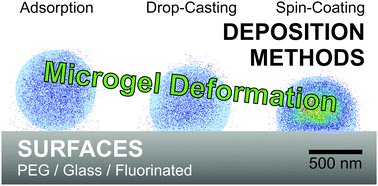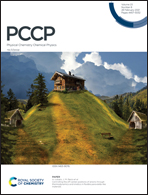Controlling microgel deformation via deposition method and surface functionalization of solid supports†
Abstract
Soft matter at solid–liquid interfaces plays an important role in multiple scientific disciplines as well as in various technological fields. For microgels, representing highly interesting soft matter systems, we demonstrate that the preparation method, i.e. the way how the microgel is applied to the specific surface, plays a key role. Focusing on the three most common sample preparation methods (spin-coating, drop-casting and adsorption from solution), we performed a comparative study of the deformation behavior of microgels at the solid–liquid interface on three different surfaces with varying hydrophilicities. For in situ visualization of the deformation of pNIPMAM microgels, we conducted highly sensitive 3D super resolution fluorescence microscopy methods. We furthermore performed complementary molecular dynamics simulations to determine the driving force responsible for the deformation depending on the surface and the deposition method. The combination of experiments and simulations revealed that the simulated equilibrium structure obtained after simulation of the completely dry microgel after deposition is retained after rehydration and subsequent fluorescent imaging.

- This article is part of the themed collection: Bunsentagung 2021: Multi-Scale Modelling & Physical Chemistry of Colloids


 Please wait while we load your content...
Please wait while we load your content...